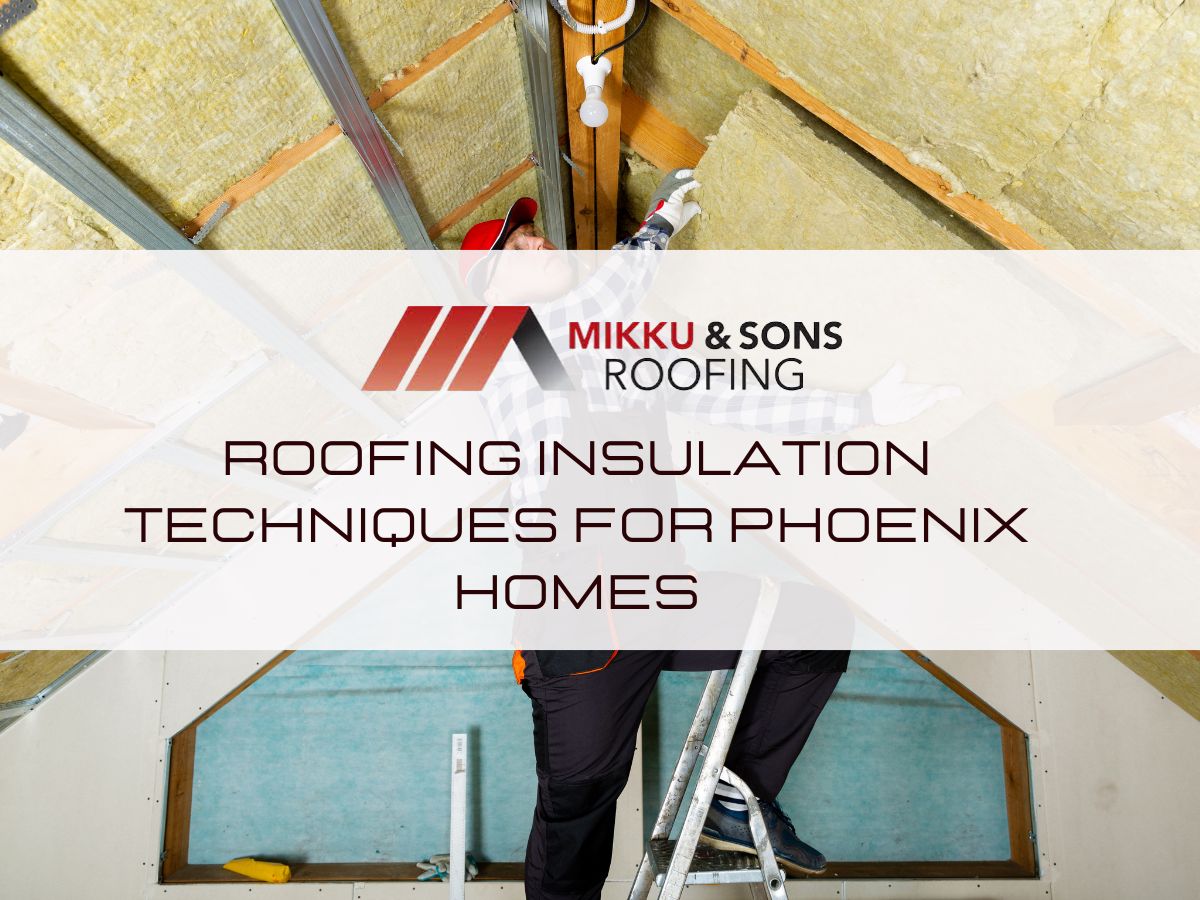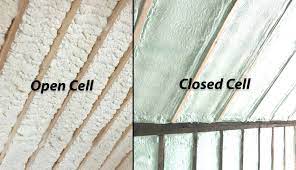

“Roofing Insulation Techniques for Phoenix Homes" explores the vital considerations and strategies for effective insulation installation in the unique desert climate of Phoenix, Arizona. In this guide, we delve into essential techniques to optimize energy efficiency, indoor comfort, and structural integrity, addressing factors such as proper ventilation, sealing air leaks, and compliance with local building codes.
By implementing these techniques, homeowners can enhance the performance of their roofing insulation systems, ensuring year-round comfort and sustainability in the challenging environmental conditions of Phoenix.
Perhaps the most notorious aspect of Phoenix's climate is its scorching heat. Summers in Phoenix are characterized by relentless sun and temperatures that often exceed 100°F (37.8°C). This extreme heat poses health risks, especially for vulnerable populations such as the elderly and those without access to air conditioning.
The weather also places strain on infrastructure, leading to increased energy demands for cooling systems and heightened risk of heat-related equipment failures.
Despite the intense heat, Phoenix also faces challenges related to water scarcity. The Sonoran Desert is one of the driest deserts in North America, receiving only around 8 inches (20 cm) of rainfall annually.
Roofing insulation plays a crucial role in maintaining thermal comfort, energy efficiency, and structural integrity in buildings. Various materials are used for roofing insulation, each offering unique properties and benefits. Here are some common types of roofing insulation materials:
Fiberglass insulation is one of the most widely used materials for roofing insulation. It is composed of tightly woven glass fibers, which create a dense, lightweight, and flexible material.
Fiberglass insulation is known for its excellent thermal and acoustic insulation properties, helping to regulate indoor temperatures and reduce noise transmission.
One of the key advantages of fiberglass insulation is its cost-effectiveness. It is relatively affordable compared to other insulation materials, making it a popular choice for both residential and commercial applications. Fiberglass insulation is also fire-resistant and moisture-resistant, enhancing the safety and durability of the building envelope.
Polyester insulation is a synthetic product made from recycled PET (polyethylene terephthalate) plastic fibers. It is available in various forms such as blankets, rolls, and batts, offering flexibility in installation.
Polyester insulation is known for its durability and longevity, as it does not degrade over time like some organic insulation materials.
One of the main advantages of polyester insulation is its environmental sustainability. By utilizing recycled materials, polyester insulation helps reduce waste and lessen the environmental impact of construction projects.
Polyester insulation is non-allergenic, making it a suitable choice for individuals with sensitivities or respiratory issues.
Cellulose insulation is made from up to 85% recycled paper fibers, typically derived from newspapers, cardboard, or other paper products. These fibers are treated with chemicals such as boric acid to improve fire resistance and insect repellency.
Cellulose insulation can be installed during construction or retrofitted to existing homes.
One of the key advantages of cellulose insulation is its high R-value, which measures thermal resistance.
By achieving a minimum R-value of 3.0, cellulose insulation helps reduce heat transfer and energy consumption, leading to lower heating and cooling costs.
Cellulose insulation is versatile and can be blown in wet or dry, allowing for easy installation in various roof configurations.
Expanded polystyrene insulation, commonly referred to as EPS insulation is a lightweight and versatile material known for its excellent thermal resistance and structural integrity. It is widely used in various construction applications, including roofing, walls, floors, and foundations.
EPS insulation is made from expanded polystyrene beads that are molded into rigid boards or panels.
One of the primary advantages of EPS insulation is its high thermal resistance, which helps to minimize heat transfer and maintain consistent indoor temperatures. By reducing thermal bridging, EPS insulation enhances the energy efficiency of buildings, resulting in lower heating and cooling costs.
EPS insulation provides reliable long-term performance, as it is resistant to moisture absorption and does not degrade over time.
Polyurethane spray foam insulation is a popular choice for air-sealing and insulating buildings. It is applied as a liquid that expands and hardens into a foam, conforming to the shape of the installation space.

Spray foam insulation comes in two main types: open-cell and closed-cell.
One of the key benefits of spray foam insulation is its air-sealing ability, which helps to minimize the risk of air infiltration, condensation, dampness, mold, and corrosion. By creating an airtight seal, spray foam insulation improves indoor air quality and enhances the overall comfort of the living or working environment.
Reflective foil insulation, also known as radiant barrier insulation, is designed to reflect radiant heat away from living spaces. It consists of a layer of reflective foil material, typically aluminum, sandwiched between layers of plastic or kraft paper.
Reflective foil insulation is commonly installed in attics, walls, and roofs to reduce heat gain in summer and heat loss in winter.
By reflecting radiant heat, reflective foil insulation helps to maintain comfortable indoor temperatures and reduce the workload on HVAC systems, leading to energy savings and improved thermal comfort.
Reflective foil insulation is lightweight, easy to install, and does not require maintenance, making it a cost-effective solution for enhancing the energy efficiency of buildings.
Blown-in insulation offers a versatile and efficient solution for insulating various areas of a building. Materials such as fiberglass, cellulose, and rockwool are kept in loose form and then blown into desired spaces like wall cavities, roof areas, and underfloor spaces.
This method allows for easy installation, even in hard-to-reach or irregularly shaped areas, ensuring thorough coverage and effective thermal insulation.
Blown-in insulation materials conform to the contours of the space, minimizing air gaps and thermal bridging, thereby improving energy efficiency and indoor comfort.
Blown-in insulation is often made from recycled materials, contributing to environmental sustainability. Overall, blown-in insulation provides an affordable, convenient, and environmentally friendly solution for enhancing the insulation properties of residential and commercial buildings.
In the desert climate of Phoenix, proper insulation installation is essential to ensure energy efficiency, indoor comfort, and structural integrity. Several key installation factors must be addressed, including proper ventilation, sealing air leaks, and compliance with local building codes.
Adequate ventilation is crucial in Phoenix to prevent moisture buildup, maintain indoor air quality, and regulate temperature. In hot climates like Phoenix, proper ventilation helps to remove excess heat and humidity, reducing the strain on cooling systems. Methods to ensure adequate airflow include:
Before installing insulation, it's essential to seal air leaks to maximize energy efficiency and prevent conditioned air from escaping. Common areas prone to air leaks include windows and doors, electrical outlets, plumbing penetrations, and attic access points.
Steps to seal leaks include:
Compliance with local building codes and regulations is essential for ensuring the safety, durability, and efficiency of insulation installations in Phoenix. Local building codes may specify requirements related to insulation R-values, vapor barriers, fire safety, and energy efficiency.
It's important to work with qualified contractors familiar with Phoenix's building codes to ensure compliance. Some key considerations include:
Proper roofing insulation techniques are paramount in Phoenix for maintaining indoor comfort and energy efficiency. By prioritizing ventilation, sealing air leaks, and adhering to local building codes, homeowners can mitigate heat gain, reduce energy consumption, and enhance the resilience of their homes against the desert climate's rigors.
With careful planning and implementation of these techniques, Phoenix residents can enjoy comfortable, energy-efficient homes while contributing to a more sustainable future.
